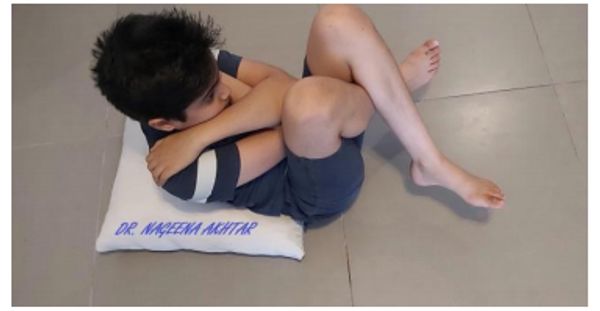Signed in as:
filler@godaddy.com
Signed in as:
filler@godaddy.com
What is The Moro Reflex?
When a baby is surprised or scared, for example by a sudden movement or a loud noise, the baby will startle, which means: extend neck and arms and breathe in, followed by flexing of spine and limbs and a loud cry.
This reflex will help the baby take the first breath when first born and is a way to communicate the need for assistance and help from mum.
This is a fight-flight reflex, a stress response, during which stress hormones are released into the blood stream. This will cause the heart rate, breathing rate and blood pressure to increase, just as when an adult is stressed.
This reflex should integrate within the first few months of life and become the less severe reaction we as adults know as startle.
Some symptoms of a non-integrated Moro Reflex
This reflex should disappear between 2-4 months of age. If retained, the child/adult may be hypersensitive to other senses and may over-react to stimulation and be in constant ‘fight or flight’.
This will lead to over activity of the sympathetic nervous system and the Adrenal Glands.
Due to the constant demands on the adrenal glands, they may become fatigued and a child/person may suffer with allergies, asthma, depressed immune system, and chronic illnesses.
Other observable social/learning problems associated with a retained Moro reflex are

Ask the child to lie over a cushion or bean bag. Ask child to slowly straighten arms and legs out, lean backward, extend spine and neck (like a starfish) and take a small breath in.

Then ask the child to move into the foetal position while crossing the arms and legs, and breathing out. Hold position for 5 seconds.

Return slowly to starfish position with the spine and neck straightened taking a breath in again.

The next cross folding will be with the arms and legs the opposite side. Hold for 5 seconds. Repeat x 10 Twice daily

The Moro Reflex can be done sitting on a chair or swiss ball depending on the ability of the child. If the child is unable to perform the movements independently, caregivers may be able to have child sit on their lap/chair and perform the movements for them until they are able to do them independently.

Arms and feet crossed whilst in the seated position.

Arms and legs/feet extended into the seated starfish position.
hold for 5 seconds

Returning into the crossed position with the opposite side leading this time.
10x, twice daily
We use cookies to optimize your website experience. By accepting our use of cookies, your data will be aggregated to help us improve our website and user experience.